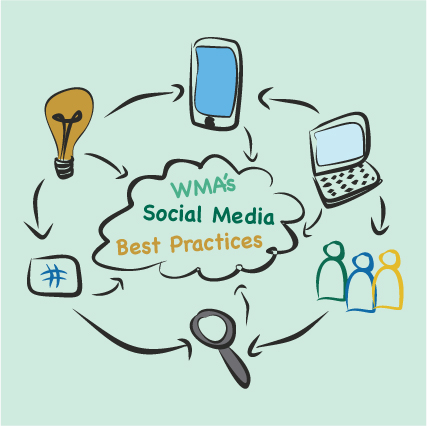 If you’re like us over the last three weeks, you’ve probably increased your daily screen time and have been habitually scrolling through social feeds, liking images and watching videos.
If you’re like us over the last three weeks, you’ve probably increased your daily screen time and have been habitually scrolling through social feeds, liking images and watching videos.
With COVID-19, platforms like Facebook, Instagram, and TikTok have become the ultimate cure from boredom at home and an even greater global community of fun activities and educational resources.
But how should your organization be using social media to reach and engage your at-home communities during this time? How can you harness the power of social media to welcome online visitors and encourage participation in your online programs while making your audience feel safe and connected?
Applying what we already know and adjusting our methods to fit today's changing communications landscape, we at WMA want to share with you our social media best practices, communication tips, and various resources to help you re-calibrate to this new social distancing norm.
1. Recreate your strategies to reflect the changing platforms
Your marketing and communication strategies from February just won’t quite work anymore. Sure, maybe some elements are worth keeping, but you’ll need to adjust your thinking, tone, and overall goals. Right now, as we speak social networks are changing and you’ll need to rethink your approach to maximize value on each platform.
2. Learn about your audience
Museums are public-serving institutions and your communities matter right now, more than ever. What do your followers want and need from you at this time? What type of people are you connecting with? Put your organization out there as much as possible to meet the psychological and sociological needs of your at-home audience. Reference these 6 Steps for Effectively Connecting with Your Audience(s).
3. Be human and be empathetic
Share your story. Be the human element behind the brand. Through your content, empathetically relate to what your followers are going through because right now, we’re all experiencing similar stresses and managing major life adjustments. Being human on social media is not overrated.
4. Be open and accessible
The beauty of social media is that it has the ability to make museums and cultural institutions more accessible to wider audiences. To drive online engagement, bring your audiences into your “home,” and creatively share elements of your more elusive departments and internal processes. And yes, you don’t need to be in your museum to do so. #AskACurator is always a great example.
5. Focus on adding value, creating engagement, and brightening the world
Not EVERYTHING on your feed needs to be strictly educational and informative. Now is the time to get creative and have some fun with your content strategies. Think about how you can brighten your followers’ day for just 15-seconds. But whatever your strategy is, make sure it makes sense for your organization and supports your mission.
Listen to this Cuseum Webinar to learn about the most successful recent online experiments and the steps needed to execute creative ideas from inception to completion.
6. Go Live on Facebook, Instagram, Twitter, or YouTube to open up the conversation
Broadcasting live is a relatively new and honestly intimidating method for socially-connecting with your audience. No matter what social network you decide to use, make sure you prepare, practice, and roll with the punches. Check out Social Media Today’s 7 Tips for Going Live on Facebook, Instagram or Twitter.
7. Change your delivery method
During this time, it’s key to be considerate and be cautious in how you promote your organization, programs, and initiatives. Use social media to demonstrate to your audience how your online exhibitions, programs, and webinars will offer benefit and match their needs.
8. Utilize social campaigns and UGC
User-Generated content (UGC) is any visual material about your museum’s identity that users create and share on their own across their social media channels. UGC is publicly-available material, authentic, quality-controlled, free, and influences audience engagement.
So why not use this to your advantage? This method will show your dedication to your audience and open communication. Read through The Complete Guide to UGC for Museums.
9. Get onboard the hashtag train
Follow and contribute to popular hashtags like #MuseumFromHome, #MuseumMomentofZen, #MyMuseumCollection, #ClosedButOpen, and #VirtualMuseum. See how other institutions are getting involved and see what you can do differently (or the same).
10. Keep posting with the goal of retention
Use social media to regularly stay in front of your audience while your doors are closed.
“Marketing during a crisis is about keeping the business growing. But it’s also about creatively addressing communications, and staying at the forefront of consumer’s minds.” – Joe Dudeck, President + Founder, Keyhole Marketing
By keeping in touch with your audience now, later down the road when things clear up, you’ll be at the top of their mind and the first experience on their list.
Written by Jessica Noyes - Communicaitons Coordinator, WMA








Add new comment